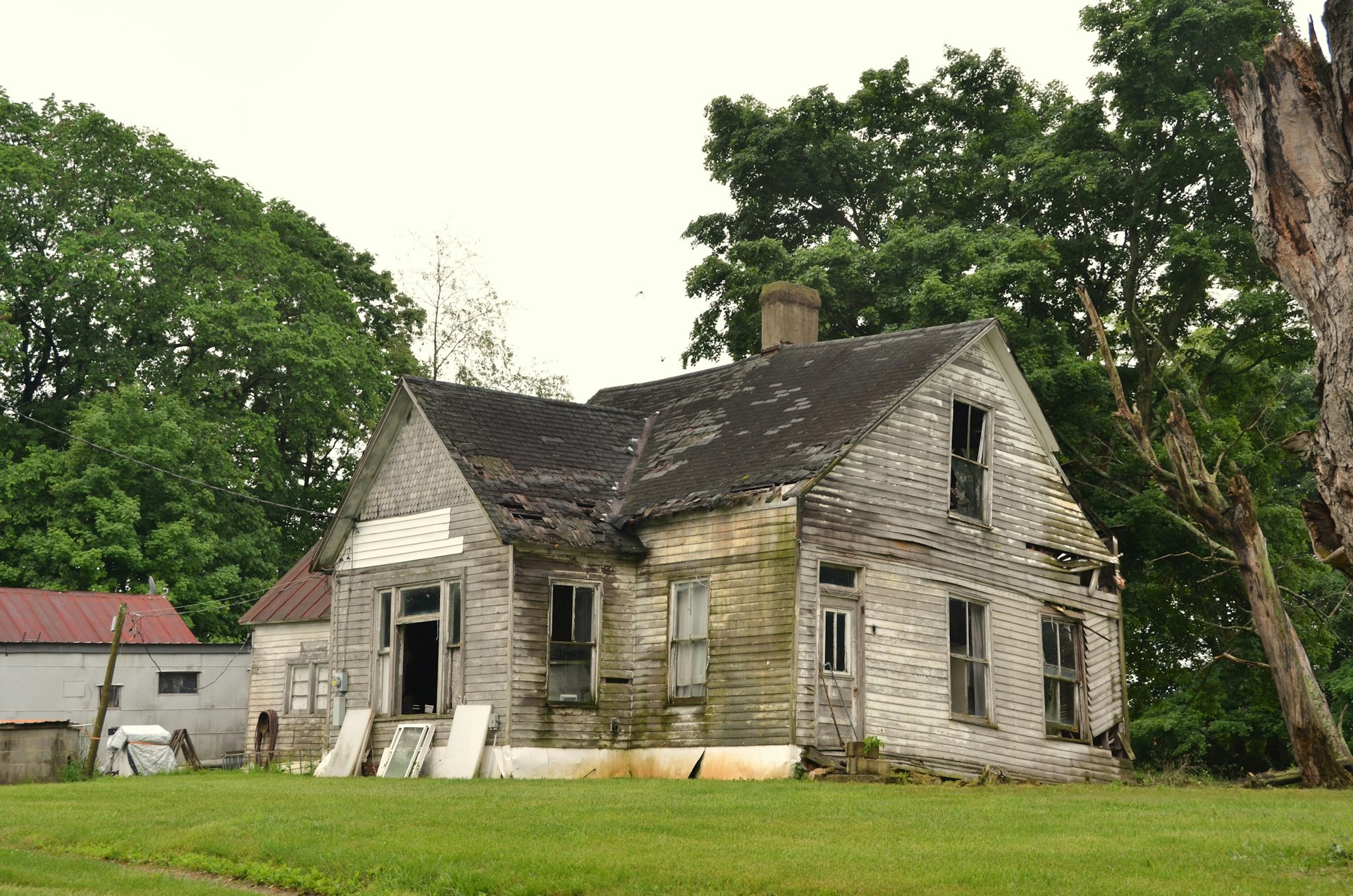Restoring Historic Properties: Success Stories, Guidance, and Practical Pathways


Photo by Roger Starnes Sr on Unsplash
Introduction: The Value and Promise of Historic Property Restoration
Historic property restoration projects offer unique opportunities to revive architectural treasures, honor local heritage, and revitalize communities. Whether a century-old schoolhouse, a landmark mansion, or a cherished neighborhood home, each restoration project presents its own set of challenges and rewards. This article provides an in-depth look at successful restoration case studies, essential restoration steps, common challenges, and practical pathways for property owners, managers, and community advocates.
Case Studies: Bringing Historic Properties Back to Life
Examining real-world examples reveals the transformative power of restoration:
Art Deco Theater Revival
One remarkable project involved restoring a 1920s Art Deco theater that had fallen into disrepair. The restoration team carefully revived original architectural features, updated infrastructure for modern use, and reopened the venue as a vibrant performance space. This not only honored the building’s cultural history but also rejuvenated the surrounding neighborhood, providing a unique venue for events and supporting local economic growth [1] .
Historic Schoolhouse Conversion
Another project focused on a century-old schoolhouse. The restoration required stabilizing a cracked foundation, repairing structural damage, and meticulously reconstructing period-specific features like original chalkboards and tin ceilings. The building was adapted for modern use as a museum, with climate control and security upgrades installed as unobtrusively as possible. This ensured both historical integrity and public accessibility [1] .
Landmark Residential Restorations
Historic homes, such as the Lockwood-Mathews Mansion Museum and Doris Duke’s Shangri La, have been restored by expert artisans using traditional methods and materials. Restoration efforts have included decorative painting, mural conservation, and structural stabilization, preserving the beauty and heritage of these properties for future generations [4] .
Community Impact Projects
Community-driven restoration initiatives, like the rehabilitation of a threatened home in Shaker Heights, Cleveland, demonstrate how local societies and partnerships can save historic structures from demolition. In this case, the Cleveland Restoration Society accepted the property as a donation, coordinated essential repairs, and returned it to the market-boosting neighborhood morale and preserving community character [3] .
Essential Steps for Successful Restoration
Undertaking a historic property restoration requires careful planning and expert input. Here are key steps to follow:
1. Assess Significance and Condition
Begin by evaluating the property’s historical importance and current state. Consult local preservation societies, historians, and architects to understand what features must be preserved and which can be adapted. Use the National Register Database and local records to verify historical status [3] .

Photo by Ronald Crow on Unsplash
2. Develop a Restoration Plan
Draft a comprehensive restoration plan that balances preservation and modern needs. Include structural repairs, restoration of original features, and integration of necessary modern systems (like HVAC, electrical, and security) with minimal intrusion on historical aesthetics [1] .
3. Source Skilled Professionals
Hire contractors and artisans with proven experience in historic restoration. Look for professionals who use traditional techniques and materials, such as skilled carpenters, mural conservators, and decorative painters. Seek recommendations from local heritage organizations and review portfolios of previous projects [4] .
4. Secure Funding and Permits
Restoration costs can vary widely. To access funding, you can:
- Apply for grants from national and local preservation societies.
- Seek tax incentives for historic preservation, often available through state and federal programs.
- Consider crowdfunding or community fundraising for projects with strong local interest.
Contact your local preservation office or search for “historic property grants” with your city, state, or the National Park Service for current opportunities.
5. Implement Restoration and Monitor Progress
Once permits and funding are secured, begin restoration work. Document each stage, photograph progress, and keep detailed records for future reference. Vigilant oversight ensures that contractors adhere to historical standards and that work remains on schedule and within budget. Adapt plans as needed when unexpected challenges arise, such as hidden structural issues or material shortages.
Common Challenges and Solutions in Historic Restoration
Restoring historic properties presents several typical hurdles:
Structural Deterioration
Older buildings may have foundational issues, rotted beams, or compromised masonry. Solutions include stabilizing foundations with modern techniques that replicate original methods, using compatible materials, and consulting structural engineers familiar with historic buildings [1] .
Restoring Authentic Features
Missing or damaged period features, such as decorative ceilings, stained glass, or woodwork, require skilled reproduction. Source period-appropriate materials from salvage companies or specialty suppliers, and consult archives for original design details [4] .
Balancing Modern Needs
Integrating modern amenities-such as climate control and ADA accessibility-without compromising historic integrity is complex. Solutions include installing systems in concealed areas, using minimally invasive methods, and consulting preservation guidelines from the National Park Service and your local preservation authority.
Practical Pathways for Accessing Restoration Services and Resources
Property owners and advocates can take the following steps:
- Contact Your Local Preservation Society: Most cities and states have organizations dedicated to historic preservation. These can provide technical guidance, connect you with skilled professionals, and help with grant applications.
- Consult the National Park Service: For federal programs and guidelines, visit the National Park Service website and search “historic preservation grants” or “Tax Incentives for Preserving Historic Properties.”
- Research Local and State Programs: Many states offer financial incentives and technical support for restoration. Search “historic restoration grants” plus your state name for current opportunities.
- Hire Qualified Contractors: Review portfolios and references, and verify credentials through industry associations like the Associated General Contractors of America.
- Engage the Community: Consider hosting informational meetings, seeking volunteers, or launching fundraising campaigns to build local support.
When links to specific agencies or programs are uncertain, always use official agency names and call or visit their main website for up-to-date information.
Examples of Historic Restoration Transforming Communities
Restoration projects often have ripple effects on their surroundings:
- The Florentine building in Birmingham, Alabama, underwent a multi-million-dollar restoration, returning a city icon to its original splendor and revitalizing the downtown social scene [5] .
- The United States Capitol Dome restoration preserved national heritage, repaired over 1,300 cracks, and upgraded infrastructure, ensuring the site remains welcoming for millions of visitors [2] .
Key Takeaways and Next Steps
Historic property restoration is a multifaceted endeavor requiring careful planning, skilled professionals, and community support. By following proven strategies, consulting official resources, and engaging with local organizations, property owners and advocates can successfully revive historic structures and preserve cultural heritage for generations to come.
References
- [1] Marzucco’s Construction (2022). Restoration Success Stories: Bringing Historic Buildings Back to Life.
- [2] BYF.org (2021). 3 Historical Restoration Projects You Need to Know.
- [3] Dumpsters.com (2023). Historic Building Restoration: Preserving Our Past.
- [4] John Canning & Co. (2024). Historic Home Restoration Examples.
- [5] REV Birmingham (2024). 10 Powerful Examples of Historic Preservation in Action.






